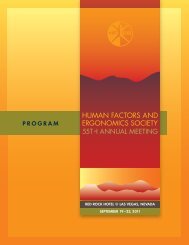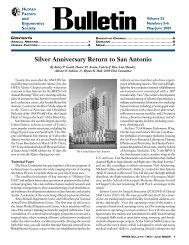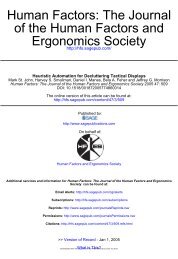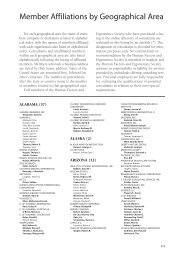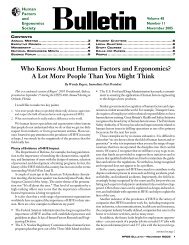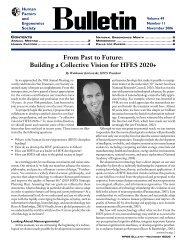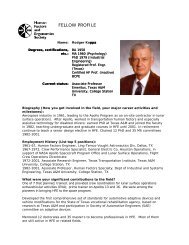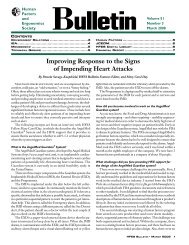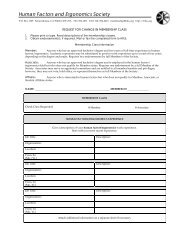Next Generation Air Transportation System Integrated Plan
Next Generation Air Transportation System Integrated Plan
Next Generation Air Transportation System Integrated Plan
You also want an ePaper? Increase the reach of your titles
YUMPU automatically turns print PDFs into web optimized ePapers that Google loves.
New vehicle capabilities may include single-pilot or autonomous<br />
operations without pilots, quieter approaches, and greater safety.<br />
New air vehicle designs will increase the level of crash survivability<br />
by incorporating design features that reduce the effects of the crash<br />
on the airframe and occupants. The use of new materials, fuels,<br />
and design processes will make aircraft more resistant to impact<br />
damage and flammability. Flight deck automation will reduce<br />
potential aircraft from being maneuvered into unsafe situations.<br />
This will prevent controlled flight into terrain, aircraft collision, and<br />
airspace violations. Furthermore, the remote piloting capabilities<br />
may enable ground intervention in case of pilot incapacitation or for<br />
security reasons. Automatic health monitoring combined with selfhealing<br />
systems in aircraft will improve reliability and predictability<br />
of service. Clearly, beneficial uses of new technologies will be<br />
supported with all the necessary decisions on procedures, roles, and<br />
assumptions about the operating environment and efficiency. This<br />
will ensure that operational procedures and policies are understood<br />
and accounted for in the design of the technologies.<br />
While many of today’s aircraft will be operating in 2025, the<br />
diversity of the commercial operating fleet will increase dramatically<br />
as new aircraft and new operational envelopes are designed.<br />
Future commercial aircraft will incorporate many environmentally<br />
compatible propulsion technologies and quieter, more efficient<br />
airframes. New materials, including composites and nanotechnology<br />
applications will lower noise, improve efficiency, and reduce<br />
emissions. These aircraft will have lower emissions per passenger<br />
trip than today’s larger commercial jets, and noise footprints will fall<br />
well within acceptable airport noise limits. Reduced operations costs<br />
and improved operational efficiencies, through more fuel-efficient<br />
engines and airframes, will allow a new generation of aircraft owners<br />
to enter the system. These aircraft operations will share airspace with<br />
current aircraft flying under visual rules.<br />
Harmonized civil and military equipment as well as operations that<br />
require communications, navigation, and spectrum availability will<br />
be vital in planning and executing global missions. International<br />
harmonization of equipage standards and procedures will also<br />
address key cost drivers such as maintenance and training. Global<br />
procedures for operating and spacing aircraft, based on the<br />
capability of an individual aircraft and the flight crew’s operational<br />
performance will mean common operations worldwide.<br />
4.5 <strong>Air</strong> Traffic Management Operations<br />
Achieving the vision for 2025 will employ a different approach<br />
to monitoring and managing the air traffic management system.<br />
New technologies and procedures will allow for a responsive air<br />
traffic management system in a dynamically changing environment.<br />
Additionally, these procedures and technologies will include the<br />
ability to provide services to airspace users on-demand from any<br />
location.<br />
In addition to the improvements previously described for aircraft and<br />
airports, performance of the new air traffic management system will<br />
be enhanced by:<br />
• Reduced separation standards<br />
• Flexible spacing and sequencing of aircraft on the ground<br />
and in the air<br />
• Use of new equipment, procedures, and infrastructures<br />
enabling increased service of under-utilized airspace,<br />
airports, and runways<br />
• Improved and tailored weather forecasts<br />
• New and enhanced technologies and procedures, reducing<br />
environmental effects of noise and emissions<br />
A new model for managing air and ground surveillance information<br />
will be in place. Reduced costs for associated infrastructures can be<br />
expected from operating from a common government capability.<br />
To accommodate shifts in demand from a wide variety of users,<br />
air traffic control will migrate from control of individual flights to<br />
air traffic management where airspace is allocated based on traffic<br />
flows. Although there will be a continued need to handle flight<br />
specific exceptions on a tactical basis, the role of dispatchers, flight<br />
planners, controllers, and flow managers will emphasize end-toend<br />
strategic flow management with minimal individual flight<br />
Joint <strong>Plan</strong>ning & Development Office 13



